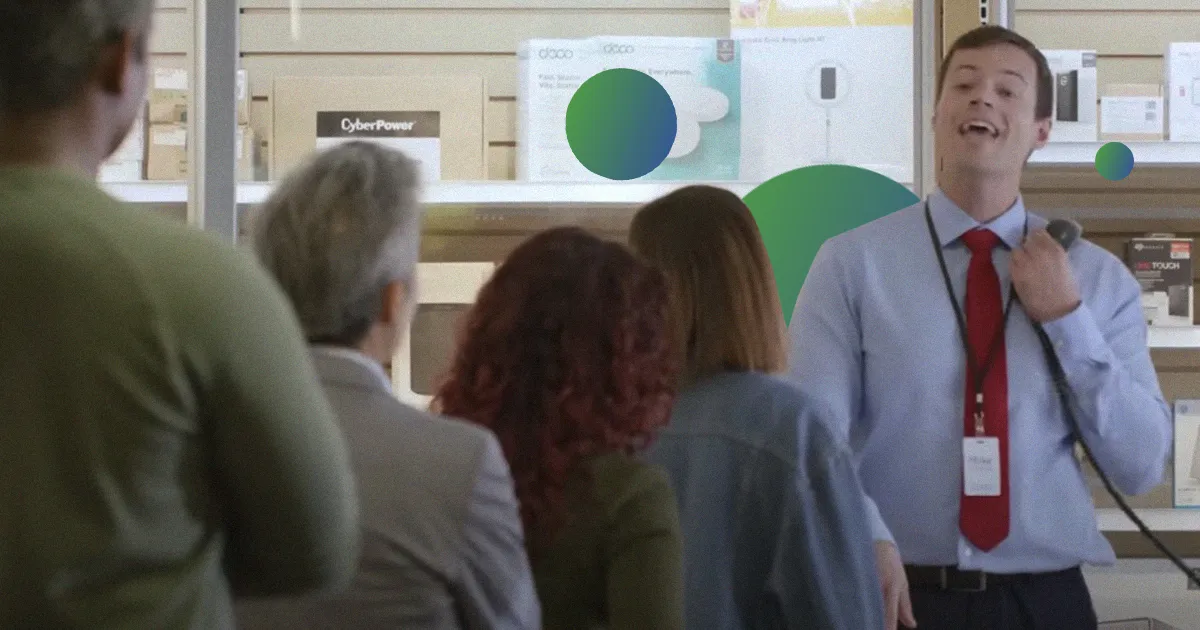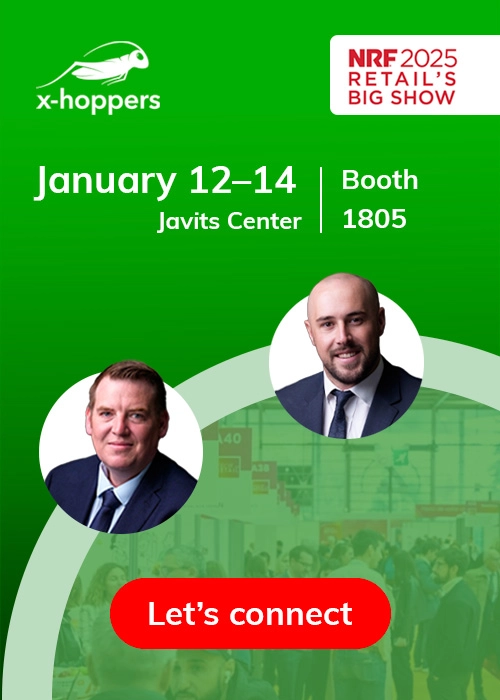Let’s face it. No matter how well you’ve planned this holiday season, there are always last-minute offers, missing goods or untrained staff that — if not handled correctly — risk impacting the in-store experience.
And while you may be tempted to just accept the chaos as part of the most wonderful time of the year, there are a few things you should consider.
During the holidays, it’s not just your loyal customers shopping. Instead, your biggest fans will have sent their grandparents, parents, partners, children and friends in your direction to buy their presents and many of them may be entering your store for the first time. Depending on how their visit goes, you could convert them into regular shoppers or lose them forever.
Speaking to staff and instant access to products are the two main advantages of shopping in-store. If one or both of these are unavailable, customers often leave frustrated and complete their purchase online. While you may not lose that specific sale, the customer has unfortunately walked away with the thought that next time they shouldn’t even bother with the store, causing you to lose out on future impulse buys.
Even with all this in mind, never fear. There are a few key actions you can take that can stop last-minute changes and surprises from impacting the in-store experience.
There’s nothing worse than spending half a day solving a problem only to hear “if I had known I could’ve fixed it right away!” When deliveries are late, a machine breaks down or someone calls off sick, you need to move fast to ensure your staff knows what is happening. With most retail communication tools, such as desk phones, handsets, walkie-talkies and PA systems, there’s no guarantee everyone who needs to hear your message will get it quickly. With a retail headset system, on the other hand, you can share the same information with the whole team at once and assign tasks without wasting time searching the shop floor or using noisy walkie-talkie or PA systems. And since headsets are hands-free, frontline workers can use them while they’re serving customers, restocking shelves or getting on with any number of tasks.
But what about last-minute central offers, product recalls or other updates from head office? Well, if that same headset system is connected to the rest of the store communication system, a member of head office can quickly dial into the conference and update the team at once, ensuring that the people on the ground get the message immediately instead of waiting for a manager to see an email and update the team.
It’s inevitable that at some point during the holiday season, you’ll have staff members on the floor covering an area or department that they’re not familiar with. It could be because they’re seasonal staff and they don’t have the same experience with your products, services and processes, or it could be because they working in the back office and haven’t been on the shop floor since the last peak period. In either case, providing them with access to accurate information when they need it can improve their confidence and help meet customer needs.
Communicating problems is key to solving them. But what if you could identify them before they became an issue? By connecting systems to a headset system, you can have everything from self-checkouts to cameras notify your staff before your customers even notice there’s an issue.
An AI detection system that interfaces with your security cameras and lets your staff know when there’s an attempted theft, a man down or even a line forming can do just that. Through automatic alerts sent straight to a headset, your staff can move quickly to investigate the theft, restock a shelf, offer life-saving help or even just reduce wait times. All before customers even notice they’re waiting or that an incident has occurred in the store.
Usually, call points are static. While research is done to decide where they should go, once they’re put in they don’t move until the next store refit. This works well enough for areas that get questions year-round but often seasonal aisles, this year’s hot toys or even outdoor tree stands whose importance is temporary don’t get the same support. As a result, customers are stuck searching the shop floor for help or just give up and walk away.
But with smart call points, creating new call points is as easy as printing out a new QR code. Fully customizable, these QR codes can be linked to specific areas or products, sending a notification straight to the headset system every time they’re scanned. Flexible and easy to put out, you could attach them to anything you know drive frequent customer queries, ensuring that customers get exactly what they came for.
Additionally, those same smart call points could also be loaded onto a tablet or other kiosk system, allowing in-store customers to connect with sales representatives in other stores or call centers. With this clever tool, you could take the pressure off your in-store staff and ensure that customers get the help they need via call, video conference or chat from a product expert. Just another way that you could use the resources you already have to meet the higher seasonal demand.
While having the tools needed to deal with surprises is important, ideally you also want to minimize the amount that pop up each year and even uncover new insights into your customers’ shopping behaviors. However, to do that you need data. Data that shows you not only the volume, timing and duration of calls to the store, but also statistics on alerts from self-checkouts, thefts and call points. And with smart call points like the ones described previously, if you’ve linked them to specific products, being able to analyze data from the scans can help you identify reoccurring issues or uncover new trends.
For example, while your messaging may focus on Christmas specifically, customers may be buying gifts, food or decorations for other holidays that you may have overlooked. That way next year you can have a list of products you already know are sellers — or are at least in demand — for Diwali, Hanukkah or Kwanza. It will also help you remember to put out those specific add-on products that might be forgotten otherwise.
When you connect your store associates to their colleagues, customers and systems, you finally empower them to jump ahead of store problems and deliver exemplary customer service. While there are a few options out there to connect your teams, the most complete system that we’ve seen so far is x‑hoppers.
But whatever you choose, make sure you pick a solution that puts your employees at the center of store operations so they have the knowledge and flexibility to meet the challenges of the holiday season and beyond.



